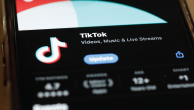Content Analysis Shows an Evolving Relationship
Jesse Holcomb of PEJ, Kim Gross of George Washington University and Amy Mitchell of PEJ
For nearly every news organization, Twitter has become a regular part of the daily news outreach. But there are questions about how those organizations actually use the technology: How often do they tweet? What kind of news do they distribute? To what extent is Twitter used as a new reporting tool or as a mechanism for gathering insights from followers?
[1]

The research, which examined more than 3,600 tweets over the course of a week, reveals that these news organizations use Twitter in limited ways-primarily as an added means to disseminate their own material. Both the sharing of outside content and engagement with followers are rare. The news content posted, moreover, matches closely the news events given priority on the news organizations’ legacy platforms.
Specifically:
- The news outlets studied varied widely in the number of Twitter feeds or channels offered and in how frequently they posted. On average, the news organizations offered 41 different organizational feeds. The Washington Post, at the top of the list, offered 98, more than twice the average. The Daily Caller, on the other hand, offered a single Twitter feed. The level of activity also ranged widely. While as a group the outlets in the sample averaged 33 tweets a day on their main organizational Twitter feed, that number ranged from close to 100 a day to fewer than 10.
- The news organizations were much more similar in the focus of their Twitter activity. The vast majority of the postings promoted the organizations’ own work and sent users back to their websites. On the main news feeds studied, fully 93% of the postings over the course of the week offered a link to a news story on the organization’s own website.
- News organizations were far less likely to use Twitter as a reporting tool or to curate or recommend information that originated elsewhere. Just 2% of the tweets from the main news feed analyzed were information-gathering in nature-seeking views or first-hand accounts from readers. And only 1% of tweets studied were “retweets” that were reposted from a Twitter feed outside the organization.
- The news agenda these organizations promoted on Twitter closely matches that of their legacy platforms. A comparison of the top stories across these Twitter feeds and across the same mix of legacy outlets reveals four out of the top five news stories were the same on Twitter as in the legacy outlets. For the week studied, February 14-20, 2011, unrest in Middle East and the U.S. economy topped both lists.
- Individual reporters were not much more likely than the news institutions to use Twitter as a reporting tool or as a way to share information produced by those outside their own news organization. An examination of the Twitter feeds of 13 individual journalists-the most followed at each outlet studied-found that 3% of the tweets solicited information, a similar rate as the institutions overall. And 6% of their tweets were retweets of postings from outside entities (compared with 1% on the institutional Twitter feeds).
- Researchers also examined the Twitter feeds of one particular news beat-health reporters. These reporters made more use of the reportorial ability of Twitter, though they still produced far more tweets that disseminated their own material. On average, 6% of the health reporters’ postings over the course of the week studied solicited information. That is twice that of the most-followed journalists (3%).
This is not to say that news organizations are not tapping into public sentiment on Twitter through other means. News staff may well be reading, even sometimes doing so on air, the comments posted by their followers. And reporters may have their own list of Twitter feeds that they check regularly. Still, these findings reveal limited use of the institution’s public Twitter identity, one that generally takes less advantage of the interactive and reportorial nature of the Twitter.
This behavior resembles the early days of the web. Initially, news organizations, worried about losing audience, rarely linked to content outside their own web domain. Now, the idea is that being a service-of providing users with what they are looking for even if it comes from someone else-carries more weight. It bears watching whether Twitter use for mainstream news organizations evolves in this same way.

FOOTNOTES
[1]
[2]
[3]




